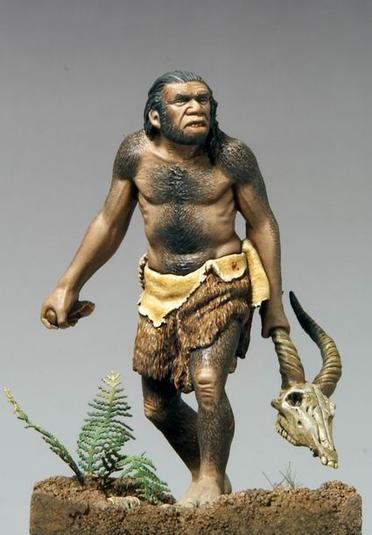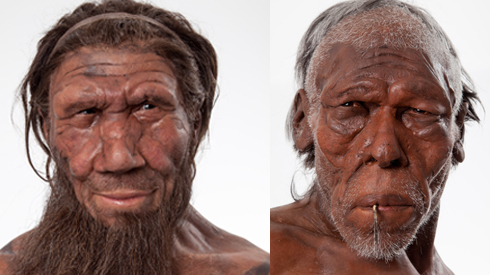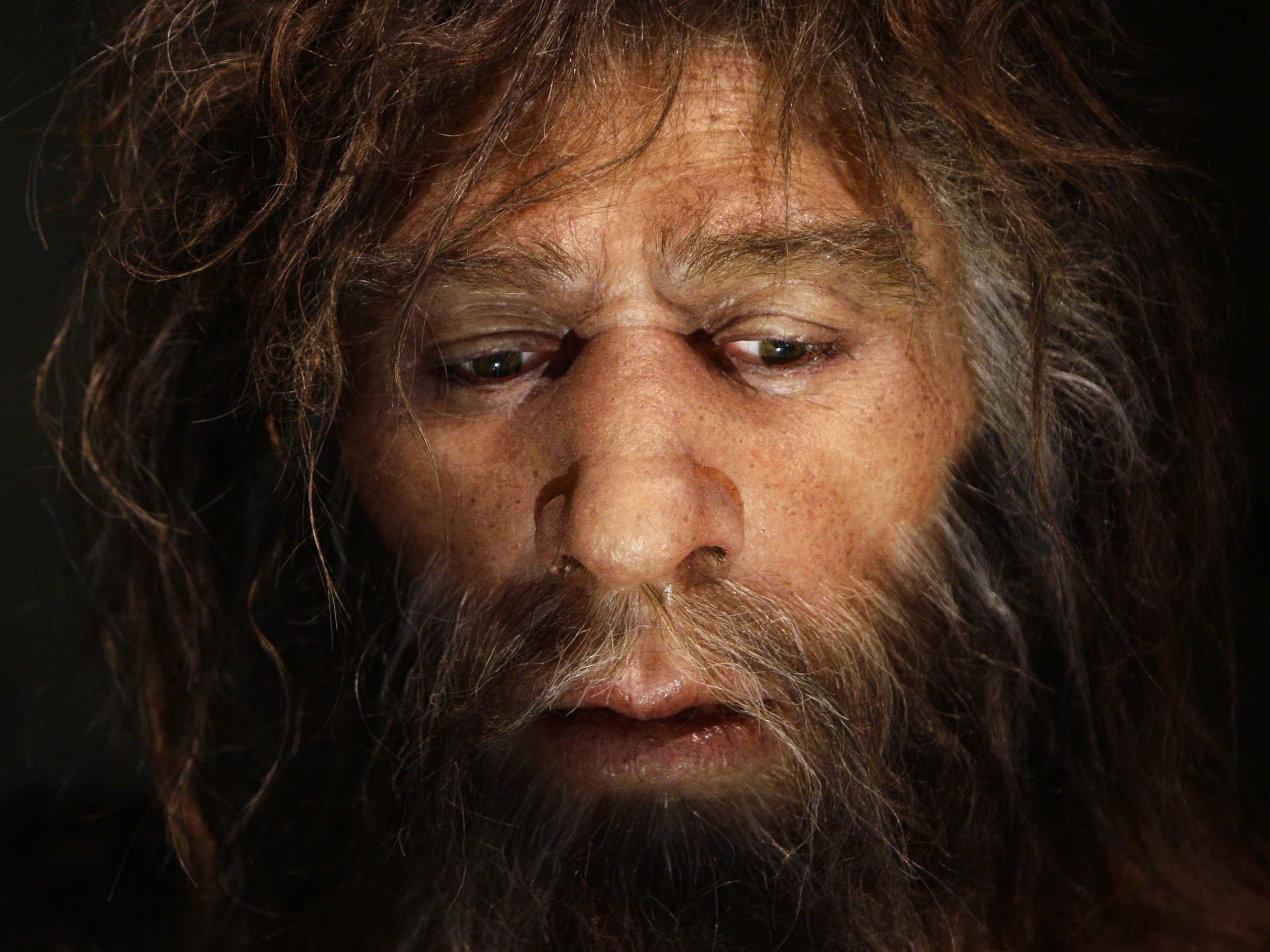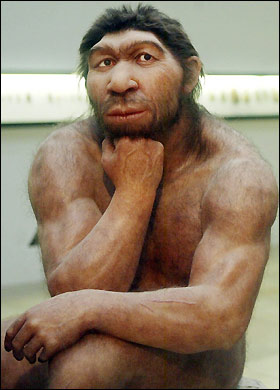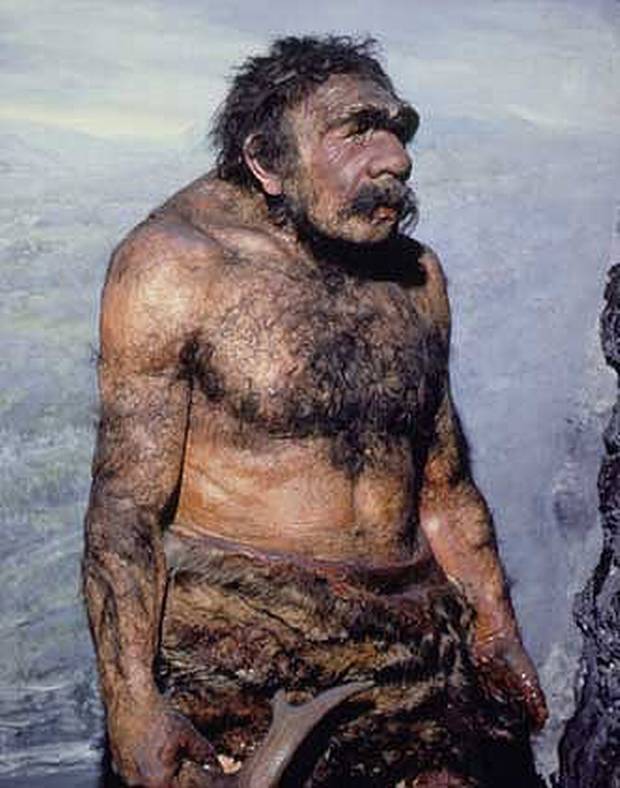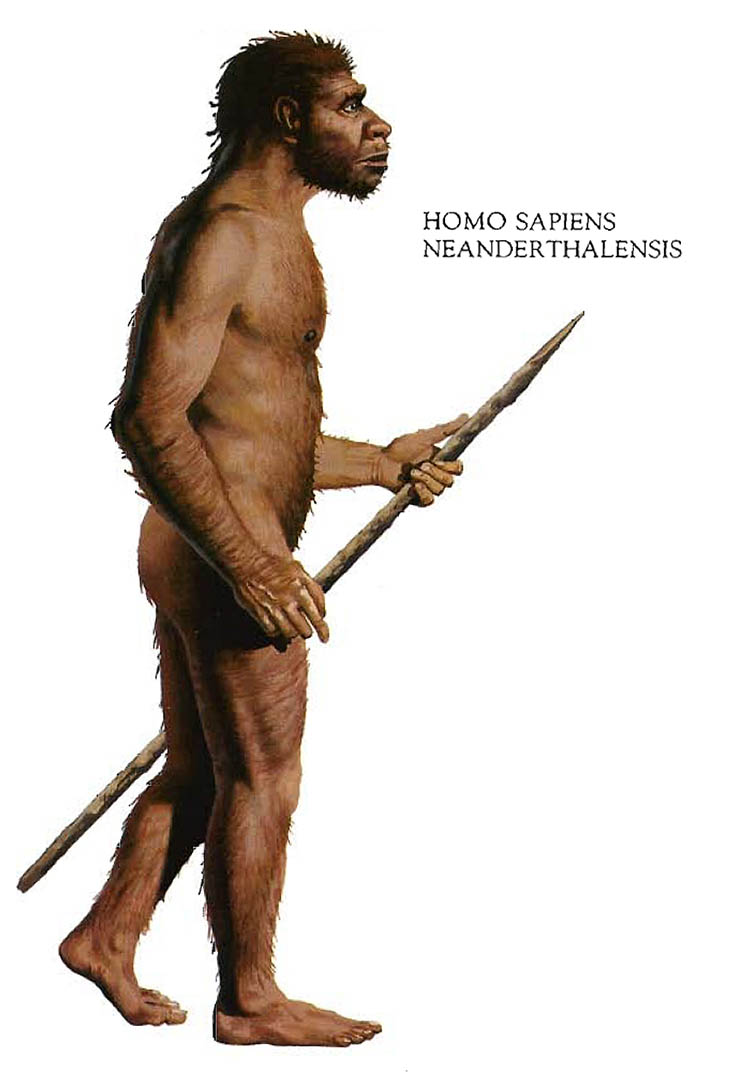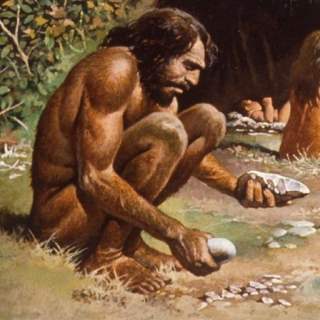| Animals World |
|
|
Neanderthal
The fossil that gave the Neanderthals their
name was found in a cave being quarried for
limestone in Germany's Neander Valley in 1856.
At least two Neanderthal fossils were discovered
before the Neander Valley individual; however,
neither was recognized as a member of an extinct
human group until after the name "Neanderthal"
was assigned. Many similar fossils have been
found in scattered locations all over Europe and
the Middle East since the Neander Valley discovery.
Dates assigned to the various fossils
indicate that the Neanderthals originated late
in the Ice Age and became extinct a few thousand
years before the last glacial retreat (from
about 200,000 years ago to about 30,000 years
ago). Thus the Neander Valley specimen lent its
name to a fossil relative of modern humans that
occupied Europe and the Middle East late in the
Ice Age.
Though the Neanderthals were very similar to
modern humans, they had several distinctive
characteristics. Neanderthals were short and exceptionally
stout-bodied with broad supportive
bones and joints. This body form suggests a life
filled with intense physical effort. Perhaps the
compact body also helped them cope with cold
stress under Ice Age conditions. Their brains were
somewhat larger than modern human brains.
That size may have compensated for the more
massive total body size of the Neanderthals, since
large-bodied organisms generally have larger
brains. Their foreheads sloped up from their exceptionally
heavy eyebrow ridges, their jaws extended
forward beyond the plane of the face, and
their chins were weakly developed. These and
several other characteristics are used to define a
fossil find as a Neanderthal.
|
Look also: Most Popular AnimalsPrincipal Terms
deoxyribonucleic acid (DNA): the chemical
that carries the instructions for all living
things; closely related organisms
have very similar DNA |
|
Copyright 2016 |
|
